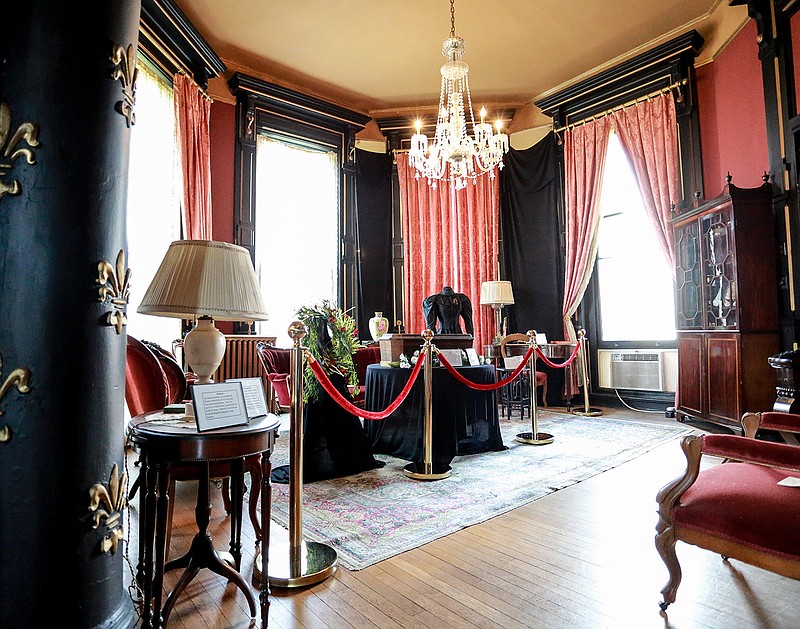Two temporary exhibits provide insight into a fascinating, albeit slightly macabre subject matter, and that's mourning customs.
"Gracefully Southern: Mourning Customs of the Victorian South" is already up at the Ace of Clubs House, while "Gracefully Southern: Mourning Customs of the Edwardian South" will be up starting Saturday at the P.J. Ahern Home. Both exhibits run through the end of October.
Zoe Nakashian and Jamie Simmons of the Texarkana Museums System worked to prepare these exhibits.
If you visit either exhibit or attend after-dark tours planned for October, you might learn something from them about topics related to death and dying in times of yore, such as poisonous wallpaper, body-snatching, mercury in top hats and green dye that contained arsenic.
And if you step into the Ace of Clubs parlor now, you'll be treated to what a Victorian-era home looked like if the family was in mourning over a loved one's death.
"We have a full Victorian lady's mourning outfit, which would be made of black crepe. They tend to be very expensive," Nakashian said of the dour, black clothing on display in the parlor of the Ace of Clubs House, where mirrors and portraits are covered by black fabric. This particular dress dates from 1895.
Mourning items could be worn for a year. Special stationary with a black edge around it was also used for correspondence. "The size of the black edge would depend on how closely you were related to the deceased," Nakashian said. Black parasols, mourning jewelry, "anything that you needed in black," she said, could be supplied by a local department store.
Queen Victoria, who wore black in mourning for much of her life, was the trendsetter. Also on display at the Ace of Clubs is a book of manners, which contained steps on what people should do and not do during the mourning period.
"The well-to-do could afford black jet jewelry, which was very expensive because you had to import the jet," Nakashian said.
Why the covered mirrors? "They believed if you saw yourself in the mirror while there was a corpse in the house you'd be the next person to die," Nakashian said.
Wakes were held for at least three days, in part because it gave people from elsewhere time to arrive. But there was another, more morbid reason, too.
"It would also ensure that the person was actually dead, so that you didn't accidentally bury them alive," Nakashian said. Someone would watch that corpse the entire time be be sure it didn't start breathing or pop up.
"In the South it was called sitting up with the dead," Simmons said, "and it was literally watch the corpse and make sure that it was dead." In modern times, she explained, this is the visitation, which happens in a funeral home instead of at the family home.
Some coffins were attached to a bell that could be rung if someone was buried alive.
"There was a whole industry around these safety coffins," Simmons said. It happened often enough that the industry thrived, she said. "There are enough true stories to concern people but it wasn't something that was as common as we might think."
The exhibit at the P.J. Ahern Home is similar, but mourning customs during the Edwardian years (early 20th century) were becoming more modern. One unique item there to see will be a cooling table.
"It would have been used by the funeral home to lay out the body in someone's parlor," Simmons said. It's portable and unfolds, and it was used to ensure the corpse stayed cool and didn't decay too rapidly, she explained.
The Ace of Clubs House is located at 420 Pine St. in Texarkana, Texas, and the P.J. Ahern Home is located at 403 Laurel St.
(More info and tour times: 903-793-4831 or TexarkanaMuseums.org.)

